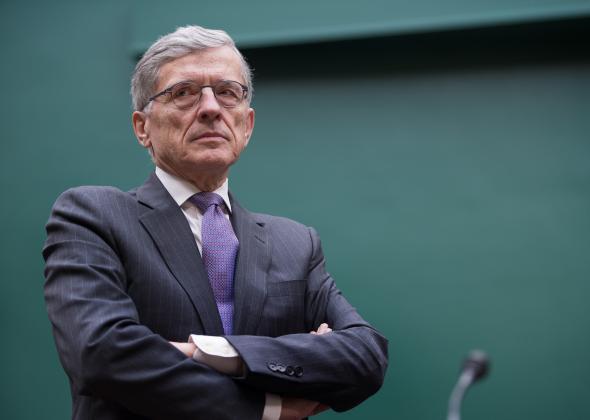This spring, the Federal Communications Commission is deciding how to regulate the “Open Internet”—a term it uses to refer to the movement for net neutrality. As American citizens and the FCC consider scenarios for the Internet of the future, we should also ask: When did policymakers and engineers begin to refer to the Internet as “open,” and why?
The conventional wisdom among advocates of net neutrality is that American policymakers should defend and preserve the “open Internet.” Calls to protect the “open Internet” have been echoed by Internet technical elites such as Vint Cerf and Edward Snowden; industry giants like Google, Amazon, and Microsoft; supporters of the multistakeholder model of Internet governance; advocates of an Open Internet of Things; and many more.
These calls to action draw on a particular caricature of Internet history. A common example comes from the Open Internet Coalition, which asserted in 2011, “openness is a fundamental principle of the Internet’s design.” This claim is bold and clear, but, unfortunately, it misrepresents the past.
One needs only to consider the development of the core Internet standards, the Transmission Control Protocol (TCP) and Internet Protocol (IP). Throughout the 1970s and early 1980s, the generous and consistent patronage of the American Department of Defense empowered Internet pioneers such as Cerf and Robert Kahn to resist economic and political pressures from IBM, European computer experts, and international telecommunications regulators. Insulated from market forces, Cerf and Kahn were able to subsidize and direct the refinement and adoption of Internet standards—thus fueling the Internet’s rapid growth.
This history, which I detail in my book Open Standards and the Digital Age, shows that the core Internet standards did not emerge from any principled commitment to openness. Rather, the formative stages of Internet governance more closely resembled a form of autocratic and centralized control over the tasks of system architecture and standardization.
In contrast to the Open Internet Coalition’s mythology, the first publication of the Internet Protocol technical specification in 1981 did not mention the word open, nor did it name openness as a fundamental design principle. Moreover, the fabled “birth of the Internet” on Jan. 1, 1983 was forced by a Department of Defense mandate for Arpanet users to adopt TCP/IP. If the Internet was not open in the 1970s or 80s, then when did it become open?
The vast technical and administrative documentation of Internet standards—much of it born digital and available online—reveals that Internet engineers did not use the term open Internet until March 1992. In a document titled “The Internet Standards Process,” Internet Activities Board Chairman Lyman Chapin introduced the language of openness to describe a variety of the Internet’s attributes. Chapin outlined “clear, open, and objective” procedures for developing standards; he praised the virtues of “openness and fairness” in the Internet standards process; and he warned that proprietary vendor specifications did not qualify as “open standards.” Twenty years after Cerf and Kahn sketched the technical foundations of the Internet, Chapin was the first to link Internet technologies explicitly to the cultural and procedural values of openness.
References to an “open Internet” became more common during the 1990s, as the Internet and other “open systems” such as UNIX became more popular. The earliest journalistic accounts of the open Internet appeared in 1994. In contrast to Chapin’s embrace of openness in the standards-setting process, Newsday described the “wide-open Internet” as a target for password-stealing hackers. Later that year, Fortune warned readers that the wide-open Internet “hasn’t been easy to navigate” and “hasn’t been secure.”
By the late 1990s, however, policymakers and academic analysts recoded “openness” as a positive, inclusive, and quasi-utopian fusion of digital networks, individual autonomy, and entrepreneurial capitalism. Soon, officials in the FCC realized that the rhetoric of openness could help deflect competing demands from powerful interest groups. In the 2010s, campaigns seeking to preserve the “open Internet” from monopolists, censors, and spies have become routine, and in 2014 the FCC faces unprecedented pressure to act decisively.
As the fate of the “open Internet” remains unresolved, the core tensions from networking history remain stubbornly in the present. A new generation of idealistic coders and engineers now has the opportunity to move beyond the rhetoric of openness, and to build new networking technologies and tools for network management that advance human rights and social justice. Fundamental questions remain in front of the FCC and the American public: will we choose to define and regulate today’s “open Internet” more tightly? Or will we find another way to ensure that the digital networks of the future serve the public interest?
